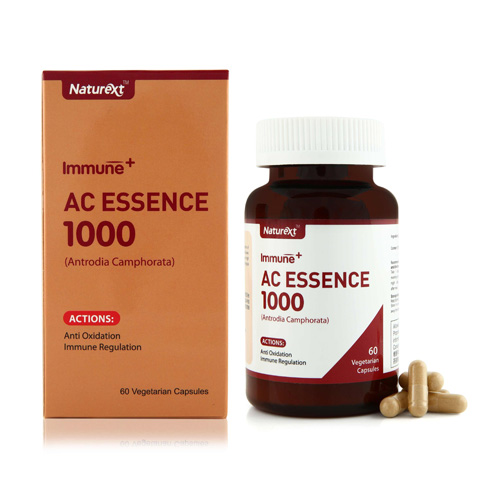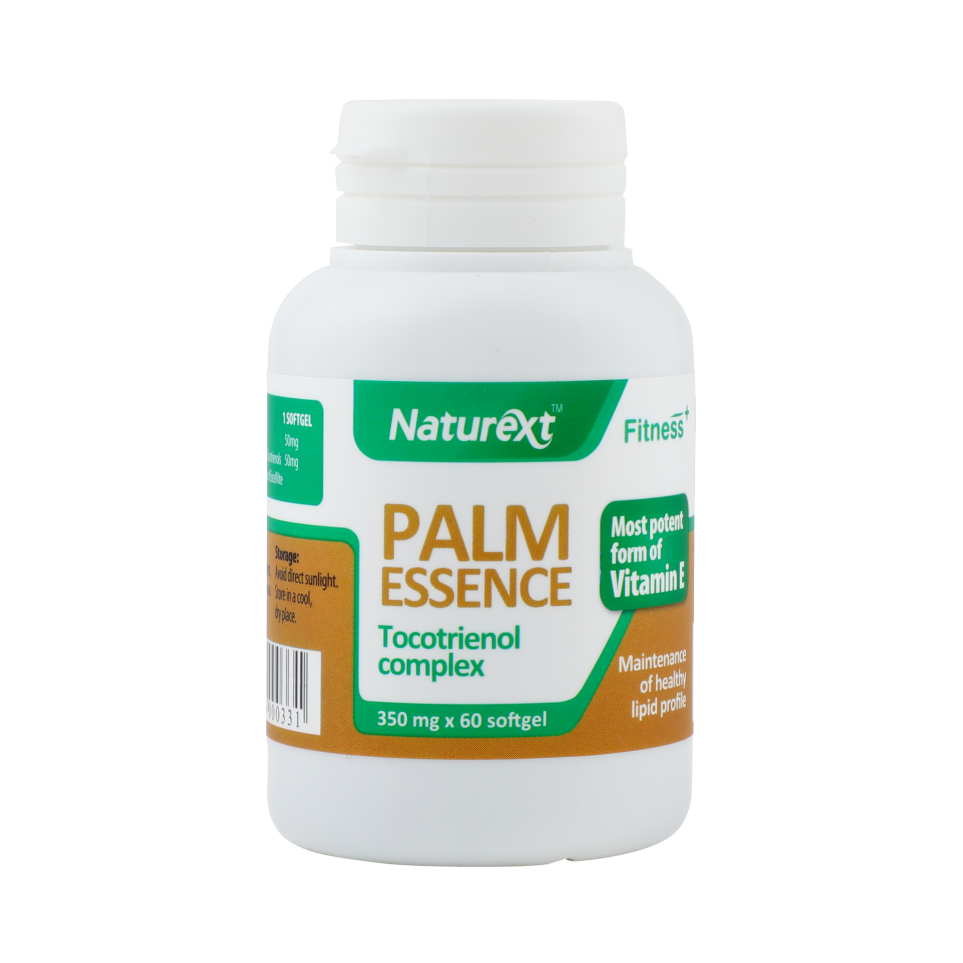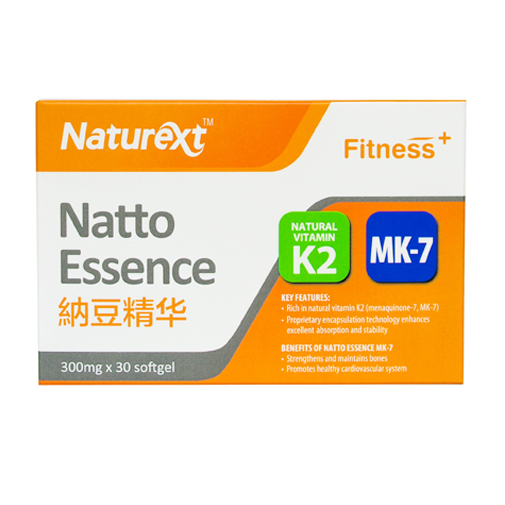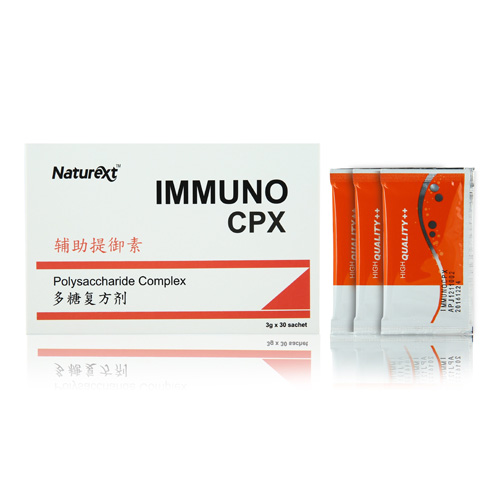AC Essence 1000™
$160.00
AC Essence 1000™ is a Chemopreventive health supplement made from powdered Antrodia Camphorata Mycelia, a rare fungus found naturally only in Taiwan. Antrodia camphorata (syn. Antrodia cinnamomea, Taiwanofungus cinnamomeas) is an indigenous and rare mushroom that grows slowly in the wild, within the inner cavity of Cinnamomun kanehirai (Bull camphor tree).
Product Description
AC Essence 1000™ is a Chemopreventive health supplement made from powdered Antrodia Camphorata Mycelia, a rare fungus found naturally only in Taiwan. Antrodia camphorata (syn. Antrodia cinnamomea, Taiwanofungus cinnamomeas) is an indigenous and rare mushroom that grows slowly in the wild, within the inner cavity of Cinnamomun kanehirai (Bull camphor tree).It is referred to as a “national treasure of Taiwan” and is used as herbal medicine for treatment of food and drug intoxications, diarrhea, abdominal pain, hypertension, itchy skin and to improve immune system and liver function.1
Triterpenoids and Antroquinonol are 2 important bioactive ingredient found in AC exhibit anti-viral, antioxidant and liver protection. Compared to the well known Ganoderma Lucidium (Lingzhi) , AC contains more than 200 types of Triterpenoids and is 10-15 times higher than Ganoderma Lucidium. 2,3
Research has shown that A. camphorata possesses a number of bioactive properties suchas anti-cancer, antioxidant, anti-inflammatory, anti-hypertensive,anti-hepatitis B virus replication, hepatoprotective and neuroprotective functions.4-11
Additional information
- Antioxidant protection against Atherosclerosis
A. camphorata are potent inhibitors of lipid peroxidation, possessing marked free-radical-scavenging activity. It protects low-density lipoproteins against oxidative modification and improves endothelial function, which may provide effective protection against atherosclerosis.12
- Anti-inflammatory and Immunomodulatory effect in the management of Nephritis
Studies have demonstrated that the anti-inflammatory and immunomodulatory effect of A. camphorata may play a role in the management of glomerulonephritis. Nrf2 and NF-kB are involved in the anti-inflammatory effects while the immunomodulatory effect is attributed to presence of polysaccharides and adenosine.11,14-16 Another in vivo study reported that A. camphorata was able to protect the kidneys from nephritis by suppression of urine protein and serum blood urea nitrogen levels and decreased the thickness of the kidney glomerular basement membrane in SLE-prone NZB/W F1 mice.18
- Hepatoprotective activity of A. camphorata
Excessive alcohol consumption results in oxidative stress and elevated intracellular reactive oxygen species (ROS) accumulation in hepatic cells. These changes play a key role in the development of a spectrum of alcoholic liver diseases (ALD) including steatosis (fatty liver), steatohepatitis (alcoholic hepatitis) and cirrhosis.The liver protective property of A. camphorata is well established.2, 20-21 Studies have shown that A. camphorata may exert its hepatoprotective effects through different mechanisms such as scavenging free radicals, mediating antioxidant enzymes, inhibiting inflammatory mediators and inducing regeneration of the liver cells.3 A. camphorata prevented the elevation of levels of serum aspartate aminotransferase (AST), alanine aminotransferase (ALT), alkaline phosphatase (ALP) and bilirubin in ethanol-intoxicated rats to an extent that was comparable to the standard drug silymarin.23 In another study, the administration of A. camphorata significantly prevented an increase of the activities of AST and ALT in the serum of mice with Propionibacterium acnes- and lipopolysaccharide-induced hepatitis.24
- Slowing the Progression of Liver Fibrosis
Liver fibrosis is the common end stage of most chronic liver diseases and its progression leads to liver cirrhosis and liver cancer. It is postulated that A. camphorata can retard the progression of liver fibrosis induced by CCl4 by scavenging free radicals formed in the liver.2In the study of the effectiveness of A. camphorata in the preventive and curative treatment of liver fibrosis, treatment with A. camphorata to CCl4 administrated rats clearly accelerated the reversal of fibrosis and lowered the elevated mRNA levels of hepatic collagen I, transforming growth factor (TGF)- β 1 and tissue inhibitors of matrix metalloproteinase (TIMP)-1.25
- Inhibition of Hepatitis B Virus (HBV) Replication
In addition, A. camphorata displayed anti-HBV effects on both wild-type and lamivudine- resistantHBV mutants.27An in vitro study showed that polysaccharides from A. camphorata extract at a dosage of 50µg/ml showed a higher level of anti-HBsAg activity without cytotoxic effects compared to α-interferon at a dosage of 1000U/ml.28
- Anti-Cancer Potential of A. camphorata
The anti-cancer potential of A. camphorata was first recognized in 2002, when it was shown to exhibit significant cytotoxicity against leukemia HL-60 cells but not against cultured human endothelial cells.29Thereafter studies have verified the anti-proliferative activity of A. camphorata against various cancersin vitro and in vivoviamodulating multiple signaling pathways at various cellular levels, resulting in apoptosis, call cycle arrest, growth inhibition, anti-angiogenesis and inhibition of metastasis.
- A. camphorata as adjuvant treatment
A. camphorata showed enhanced cytotoxicity when it is used in combination with other agents such as paclitaxel, trichostatin A (TSA) and lovastatin.31-33 This synergistic effect suggest the potential for its use as an adjuvant to chemotherapy.One study showed that A. camphorata extract when combined with anti-tumor agents Cisplatin and Mitomycin showed adjuvant anti-proliferative effects on hepatoma C3A and PLC/PRF/5 cells in vitro and on xenografted cells in tumor-implanted nude mice in vivo. A. camphorata showed its adjuvanteffects through the inhibition of MDR gene expressions and the pathway of COX-2- dependent inhibition of p-AKT, which ultimately resulted in the induction of apoptosis in hepatomacells.8
- Protection against radiation side effects
A. camphorata is able to provide a radioprotective effect to immune cells and enhances radiation-induced inflammation and cytotoxicity in cancer cells. Pre-treatment with A. camphorata differentially regulated the mRNA expression of several important immunomodulatory genes in response to irradiation in normal and cancer cells.34
Supplement Facts
| Amount per serving | 500mg x 60 vegetarian capsules / bottle |
| Ingredients | Antrodia Camphorata powered mycelia 500mg |
| Administration | Take before bedtime Take before breakfast or after lunch |
| Storage | Store in a cool, dry place. Protect from light. |
| Caution for Usage |
AC Essence® is free of preservative, adulteration or artificial additives. Patented fermentation method is used for cultivation in the aseptic laboratory and the process is under CMC control. |
References
1. Tsai ZT, Liaw SL. The Use and the Effect of Ganoderma. San Yun Press, Taichung, Taiwan, 1985
2. Geethangili, M. and Tzeng Y.M., Review of pharmacological effects of Antrodia camphorata and its bioactive compounds, Evidence-based complementary and alternative medicine, 2011; 1-17.
3. Yu, X.C., Xia, Y.J. et al. Research of A. camphorata solid-state fermentation production antroquinonol and extraction antroquinonol, Science and Technology of Food Industry 5 (2013):035
4. Hseu YC, Chen SC, Yech YJ, Wang L, Yang HL. Antioxidant activity of Antrodia camphorata on free radical-induced endothelial cell damage. J Ethnopharmacol. 2008 Jul 23;118(2):237-45.
5. Chen JJ, Lin WJ, Liao CH, Shieh PC. . Anti-inflammatory benzenoids from Antrodia camphorata. J Nat Prod. 2007 Jun;70(6):989-92.
6. Lee TH, Lee CK, Tsou WL, Liu SY, Kuo MT, Wen WC. . A new cytotoxic agent from solid-state fermentedmycelium of Antrodia camphorata. Planta Med. 2007 Oct;73(13):1412-5.
7. Lu ZM, Tao WY, Zou XL, Fu HZ, Ao ZH. . Protective effects of mycelia of Antrodia camphorata and Armillariella tabescens in submerged culture against ethanol-induced hepatic toxicity in rats. J Ethnopharmacol. 2007 Mar 1;110(1):160-4.
8. Chang CY, Huang ZN, Yu HH, Chang LH, Li SL, Chen YP, Lee KY, Chuu JJ. The adjuvant effects of Antrodia camphorata extracts combined with anti-tumor agents on multidrug resistant human hepatoma cells. J Ethnopharmacol. 2008 Aug 13;118(3):387-95
9. Wang GJ, Tseng HW, Chou CJ, Tsai TH, Chen CT, Lu MK. The vasorelaxation of Antrodiacamphoratamycelia: involvement of endothelial Ca2+-NO-cGMP pathway. Life Sci. 2003 Oct 10;73(21):2769-83.
10. Lu MK, Cheng JJ, Lai WL, Lin YJ, Huang NK. FermentedAntrodia cinnamomea extract protects rat PC12 cells from serum deprivation-induced apoptosis: the role of the MAPK family. J Agric Food Chem. 2008 Feb 13;56(3):865-74.
11. Chen YJ, Cheng PC, Lin CN, Liao HF, Chen YY, Chen CC, Lee KM. Polysaccharides from Antrodia camphorata mycelia extracts possess immunomodulatory activity and inhibits infection of Schistosoma mansoni. Int Immunopharmacol. 2008 Mar;8(3):458-67
12. Yang HL, Hseu YC, Chen JY, Yech YJ, Lu FJ, Wang HH, Lin PS, Wang BC. Antrodia camphorata in submerged culture protects low density lipoproteins against oxidative modification. Am J Chin Med. 2006;34(2):217-31.
13. Lin TJ, Lee YY, Tzeng BH, Yang SP, Ho CW, Hueng DY, Chang JM, Huang KL, Lin FG, Chen A, Hwu Y, Ka SM. Antroquinonol, an active pure compound from Antrodia camphorate mycelium, modulates the development of atherosclerosis in a mouse carotid artery ligation model. J Med Sci 2014;34:56-61.
14. Kuo MC, Chang CY, Cheng TL, Wu MJ. Immunomodulatory effect of Antrodia Camphorata mycelia and culture filtrate. J Ethnopharmacol. 2008 Nov 20;120(2):196-203
15. Haskó G, Cronstein BN. Adenosine: an endogenous regulator of innate immunity. Trends Immunol. 2004 Jan;25(1):33-9.
16. Tsai PY, Ka SM, Chao TK, Chang JM, Lin SH, Li CY, Kuo MT, Chen P, Chen A. Antroquinonol reduces oxidative stress by enhancing the Nrf2 signaling pathway and inhibits inflammation and sclerosis in focal segmental glomerulosclerosis mice. Free Radic Biol Med. 2011 Jun 1;50(11):1503-16.
17. Yang SM, Ka SM, Hua KF, Wu TH, Chuang YP, Lin YW, Yang FL, Wu SH, Yang SS, Lin SH, Chang JM, Chen A.Antroquinonol mitigates an accelerated and progressive IgA nephropathy model in mice by activating the Nrf2 pathway and inhibiting T cells and NLRP3 inflammasome. Free Radic Biol Med. 2013 Aug;61:285-97
18. Chang JM, Lee YR, Hung LM, Liu SY, Kuo MT, Wen WC, Chen P. An Extract of Antrodia camphorata Mycelia Attenuates the Progression of Nephritis in Systemic Lupus Erythematosus-Prone NZB/W F1 Mice. Evid Based Complement Alternat Med. 2011;2011:465894.
19. Tsai PY, Ka SM, Chang JM, Lai JH, Dai MS, Jheng HL, Kuo MT, Chen P, Chen A. Antroquinonol differentially modulates T cell activity and reduces interleukin-18 production, but enhances Nrf2 activation, in murine accelerated severe lupus nephritis. Arthritis Rheum. 2012 Jan;64(1):232-42.
20. Dai YY, Chuang CH, Tsai CC, Sio HM, Huang SC, Chen JC, Hu ML. The protection of Antrodia camphorata against acute hepatotoxicity of alcohol in rats. Journal of Food and Drug Analysis. 2003 11, 177–185.
21. Hsiao G, Shen MY, Lin KH, Lan MH,Wu LY, Chou DS, Lin CH, Su CH, Sheu JR. Antioxidant and hepatoprotective effective of Antrodia camphorata extract. Journal of Agricultural and Food Chemistry. 2003 51, 3302–3308.
22. Kumar KJ, Chu FH, Hsieh HW, Liao JW, Li WH, Lin JC, Shaw JF, Wang SY. Antroquinonol from ethanolic extract of mycelium of Antrodia cinnamomea protects hepatic cells from ethanol-induced oxidative stress through Nrf-2 activation. J Ethnopharmacol. 2011 Jun 14;136(1):168-77.
23. Lu ZM, Tao WY, Zou XL, Fu HZ, Ao ZH. Protective effects of mycelia of Antrodia camphorata and Armillariella tabescens in submerged culture against ethanol-induced hepatic toxicity in rats. Journal of Ethnopharmcology. 2007;110,160–164.
24. Han HF, Nakamura N, Zuo F, Hirakawa A, Yokozawa T, Hattori M. Protective effects of a neutral polysaccharide isolated from the mycelium of Antrodia cinnamomea on Propionibacterium acnes and lipopolysaccharide induced hepatic injury in mice. Chemical & Pharmaceutical Bulletin. 2006 54, 496–500.
25. Lin WC, Kuo SC, Lin WL, Fang HL, Wang BC. Filtrate of fermented mycelia from Antrodia camphorata reduces liver fibrosis induced carbon tetrachloride in rats. World Journal of Gastroenterology. 2006 12, 2369–2374.\
26. Liu SY, Kuo MT, Wen WC. Inhibition of hepatitis B virus by cyclohexenone compounds from Antrodia camphorata. US 7411003.2008.
27. Huang RL, Huang Q, Chen CF, Chang TT, Chou CJ. Anti-viral effects of active compounds from Antrodia camphorata on wild-type and lamivudine resistant mutant HBV. The Chinese Pharmaceutical Journal. 2003 55, 371–379.
28. Lee IH, Huang RL, Chen CT, Chen HC, Hsu WC, Lu MK. Antrodia camphorata polysaccharides exhibit anti-hepatitis B virus effects. FEMS Microbiology Letters. 2002 209, 63–67.
29. Hseu YC, Chang WC, Hseu YT, Lee CY, Yech YJ, Chen PC, Chen JY, Yang HL. Protection of oxidative damage by aqueous extract from Antrodia camphorata mycelia in normal human erythrocytes. Life Sci. 2002 Jun 14;71(4):469-82.
30. Ho CL, Wang JL, Lee CC, Cheng HY, Wen WC, Cheng HH, Chen MC. Antroquinonol blocks Ras and Rho signaling via the inhibition of protein isoprenyltransferase activity in cancer cells. Biomed Pharmacother. 2014 Oct;68(8):1007-14
31. Lu MC, Du YC, Chuu JJ, Hwang SL, Hsieh PC, Hung CS, Chang FR, et al. Active extracts of wild fruiting bodies of Antrodia camphorata (EEAC) induce leukemia HL 60 cells apoptosis partially through histone hypoacetylation and synergistically promote anticancer effect of trichostatin A. Arch Toxicol 2009;83:121e9.
32. Liu SY, Wen WC, Tsou WL, Kuo MT. Compound from Antrodia camphorata for inhibiting the growth of cancer cells. US Patent 2008/0103195. 2008.
33. Yao CJ, Chuang SE, Lai GM, Chan CF. Cancer treatment. US Patent 2009/0196885. 2009.
34. Cheng PC, Huang CC, Chiang PF, Lin CN, Li LL, Lee TW, Lin B, Chen IC, Chang KW, Fan CK, Luo TY. Radioprotective effects of Antrodia cinnamomea are enhanced on immune cells and inhibited on cancer cells. Int J Radiat Biol. 2014 Oct;90(10):841-52.
35. Chiang PC, Lin SC, Pan SL, Kuo CH, Tsai IL, Kuo MT, Wen WC, Chen P, Guh JH. Antroquinonol displays anticancer potential against human hepatocellular carcinoma cells: a crucial role of AMPK and mTOR pathways. Biochem Pharmacol. 2010 Jan 15;79(2):162-71.
36. Chen YS, Pan JH, Chiang BH, Lu FJ, Sheen LY. Ethanolic extracts fo Antrodia cinnamomea mycelia fermented at varied times and scales have differential effects on heptoma cells and normal primary hepatocytes. J Food Sci. 2008 Sep;73(7):H179-85.
37. Song TY, Hsu SL, Yeh CT, Yen GC.Mycelia from Antrodia camphorata in submerged culture induced apoptosis of human heptoma HepG2 cells possibility through regulation of Fas pathway. J Agric Food Chem. 2005 Jul 13;53(14):5559-64.
38. Song TY, Hsu SL, Yen GC.Induction of apoptosis in human hepatoma cells by mycelia of Antrodia camphorata in submerged culture. J Ethnopharmacol. 2005 Aug 22;100(1-2):158-67.
39. Lee WT, Lee TH, Cheng CH, Chen KC, Chen YC, Lin CW. Antroquinonol from Antrodia Camphorata suppresses breast tumor migration/invasion through inhibiting ERK-AP-1- and AKT-NF-κB-dependent MMP-9 and epithelial-mesenchymal transition expressions. Food Chem Toxicol. 2015 Apr;78:33-41.
40. Wang SC, Lee TH, Hsu CH, Chang YJ, Chang MS, Wang YC, Ho YS, Wen WC, Lin RK.Antroquinonol D, isolated from Antrodia camphorata, with DNA demethylation and anticancer potential. J Agric Food Chem. 2014 Jun 18;62(24):5625-35.
41. Yang HL, Kuo YH, Tsai CT, Huang YT, Chen SC, Chang HW, Lin E, Lin WH, Hseu YC. Anti-metastatic activities of Antrodia camphorata against human breast cancer cells mediated through suppression of the MAPK signaling pathway. Food Chem Toxicol. 2011 Jan;49(1):290-8.
42. Hseu YC, Chen SC, Chen HC, Liao JW, Yang HL. Antrodia camphorata inhibits proliferation of human breast cancer cells in vitro and in vivo. Food Chem Toxicol. 2008 Aug;46(8):2680-8.
43. Hseu YC, Chen SC, Tsai PC, Chen CS, Lu FJ, Chang NW, Yang HL. Inhibition of cyclooxygenase-2 and induction of apoptosis in estrogen-nonresponsive breast cancer cells by Antrodia camphorata. Food Chem Toxicol. 2007 Jul;45(7):1107-15.
44. Yang HL, Chen CS, Chang WH, Lu FJ, Lai YC, Chen CC, Hseu TH, Kuo CT, Hseu YC. Growth inhibition and induction of apoptosis in MCF-7 breast cancer cells by Antrodia camphorata. Cancer Lett. 2006 Jan 18;231(2):215-27.
45. Kumar VB, Yuan TC, Liou JW, Yang CJ, Sung PJ, Weng CF. Antroquinonol inhibits NSCLC proliferation by altering PI3K/mTOR proteins and miRNA expression profiles. Mutat Res. 2011 Feb 10;707(1-2):42-52.
46. Wu H, Pan CL, Yao YC, Chang SS, Li SL, Wu TF. Proteomic analysis of the effect of Antrodia camphorata extract on human lung cancer A549 cell. Proteomics. 2006 Feb;6(3):826-35.
47. Chang CW, Chen YS, Chen CC, Chen CC, Sheu SJ, Lin TW, Lee TC, Lo JF. Lyophilized particles and ethanolic extracts of Antrodia cinnamomea mycelia suppress the tumorigenicity of head and neck cancer cells in vivo. Biomedicine (Taipei). 2014;4:26.
48. Yu CC, Chiang PC, Lu PH, Kuo MT, Wen WC, Chen P, Guh JH. Antroquinonol, a natural ubiquinone derivative, induces a cross talk between apoptosis, autophagy and senescence in human pancreatic carcinoma cells. J Nutr Biochem. 2012 Aug;23(8):900-7.
49. Hseu YC, Yang HL, Lai YC, Lin JG, Chen GW, Chang YH. Induction of apoptosis by Antrodia camphorata in human premyelocytic leukemia HL-60 cells. Nutr Cancer. 2004;48(2):189-97. Liu JJ, Huang TS, Hsu ML, Chen CC, Lin WS, Lu FJ, Chang WH.
50. Antitumor effects of the partially purified polysaccharides from Antrodia camphorata and the mechanism of its action. Toxicol Appl Pharmacol. 2004 Dec 1;201(2):186-93.





